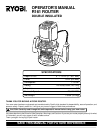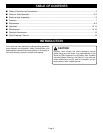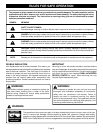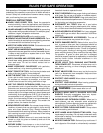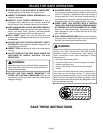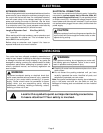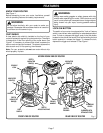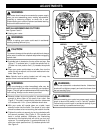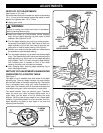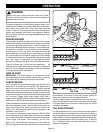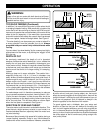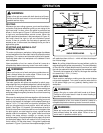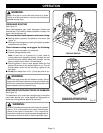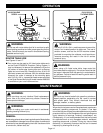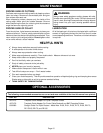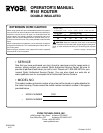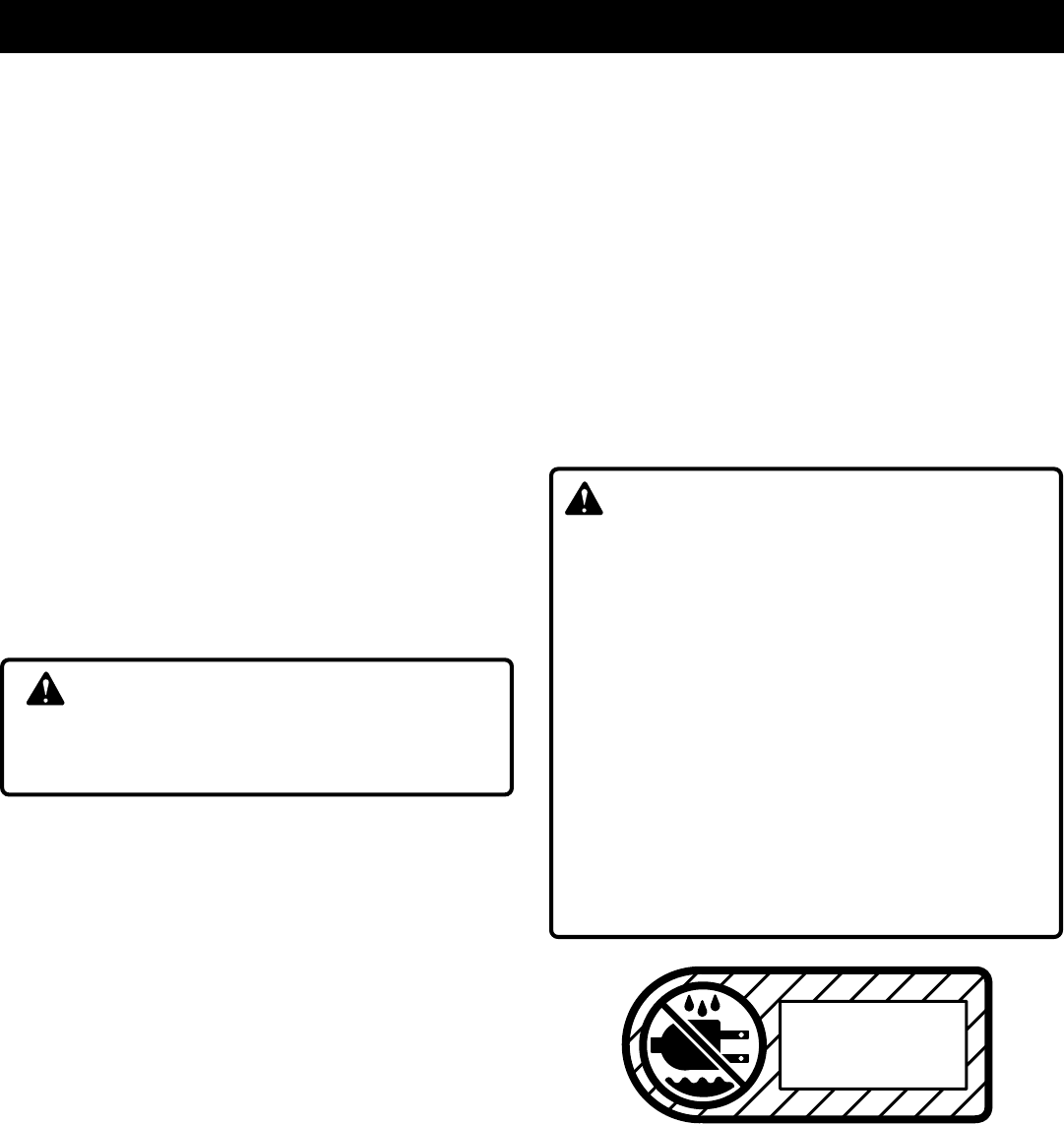
Page 5
SAVE THESE INSTRUCTIONS
■ POLARIZED PLUGS. To reduce the risk of electric shock,
this tool has a polarized plug (one blade is wider than the
other). This plug fits in a polarized outlet only one way. If
the plug does not fit fully in the outlet, reverse the plug. If
it still does not fit, contact a qualified electrician to install
the proper outlet. Do not change the plug in any way.
■ WHEN USING THIS ROUTER WITH A ROUTER
TABLE, HELP PREVENT POSSIBLE SERIOUS INJURY
BY KEEPING THE CUTTER GUARDED AT ALL TIMES.
Use only UL listed router tables, with guards, that have
been designed for use on routers that are of this type,
size, and weight.
■ SAVE THESE INSTRUCTIONS. Refer to them frequently
and use them to instruct other users. If you loan someone
this tool, loan them these instructions also.
RULES FOR SAFE OPERATION
■ NEVER USE IN AN EXPLOSIVE ATMOSPHERE.
Normal sparking of the motor could ignite fumes.
■ INSPECT EXTENSION CORDS PERIODICALLY and
replace if damaged.
■ INSPECT TOOL CORDS PERIODICALLY and if
damaged, have repaired at your nearest authorized
service center. Stay constantly aware of cord location.
■ KEEP HANDLES DRY, CLEAN, AND FREE FROM OIL
AND GREASE. Always use a clean cloth when cleaning.
Never use brake fluids, gasoline, petroleum-based
products or any strong solvents to clean your tool.
■ STAY ALERT. Watch what you are doing and use
common sense. Do not operate tool when you are tired.
Do not rush.
■ DO NOT USE TOOL IF SWITCH DOES NOT TURN IT
ON AND OFF. Have defective switches replaced by an
authorized service center.
■ INSPECT FOR and remove all nails from lumber before
routing.
■ DO NOT OPERATE THIS TOOL WHILE UNDER THE
INFLUENCE OF DRUGS, ALCOHOL, OR ANY
MEDICATION.
WARNING:
When servicing use only identical Ryobi replacement
parts. Use of any other parts may create a hazard or
cause product damage.
■ DO NOT USE TOOL UNDER "BROWNOUT" OR
OTHER LOW VOLTAGE CONDITIONS. Also, do not
use with any device that could cause the power supply
voltage to change.
WARNING:
Some dust created by power sanding, sawing, grinding,
drilling, and other construction activities contains
chemicals known to cause cancer, birth defects or
other reproductive harm. Some examples of these
chemicals are:
• lead from lead-based paints,
• crystalline silica from bricks and cement and other
masonry products, and
• arsenic and chromium from chemically-treated
lumber.
Your risk from these exposures varies, depending on
how often you do this type of work. To reduce your
exposure to these chemicals, work in a well ventilated
area, and work with approved safety equipment, such
as those dust masks that are specially designed to filter
out microscopic particles.
DO NOT EXPOSE
TO RAIN OR USE IN
DAMP LOCATIONS



